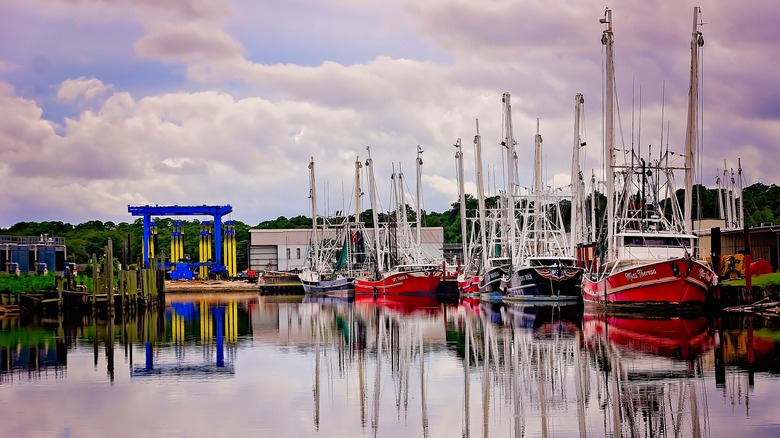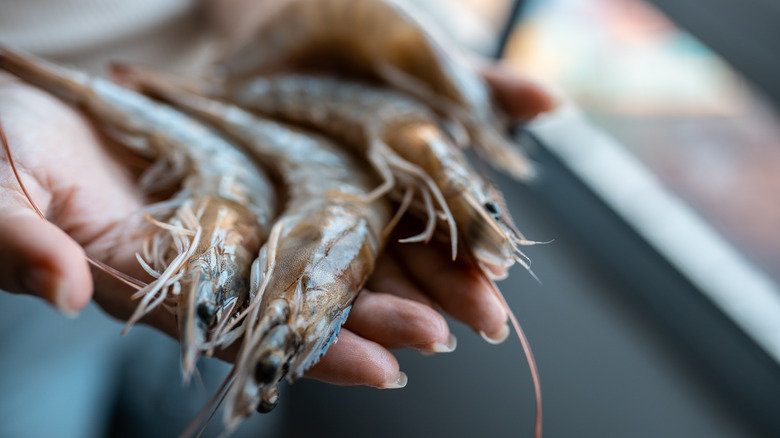Alabama's Seafood Capital Is A Sleepy, Wildly Underrated Town On The Gorgeous Gulf Coast
If you want to plan a trip to a southern bayou, where you can indulge yourself in some of the best Gulf Coast seafood possible, you might assume that Louisiana is your best bet. After all, cities like Lafayette and the underrated, authentic Lake Charles are well-known for having incredible food and culture, and they're practically right next to the Gulf of Mexico.
However, much like Bay St. Louis in Mississippi, Alabama is home to one of the coolest, tastiest, and most underrated small towns in the South. Bayou la Batre (pronounced Bye-yoo la Bat-tree) is a name that might sound familiar if you're a fan of the movie "Forrest Gump" (it's where his friend Bubba lived). However, outside of the film, few southern visitors — and perhaps even residents — know about this hidden gem.
But if you're a fan of Gulf Coast seafood (like shrimp, oysters, clams, and mussels), then you must make a pilgrimage to this corner of Alabama. What it lacks in population and big city infrastructure, it more than makes up for with a delicious meal. Bring your bibs and see what Bayou la Batre is all about.
A brief history of Bayou la Batre, Alabama
The story of Bayou la Batre began in the late 1700s, when the Spanish empire controlled the area. However, while the land technically belonged to Spain, the government gave a 1,200-acre plot to a Frenchman named Joseph Bousage. Afterward, the French seized control and installed a battery of cannons for protection. As such, the French renamed the city from Riviere d'Erbane (River of Erbane) to Riviere la Batterie (Battery River). Over time, Riviere was changed to Bayou, and Batterie became Batre.
In 1811, the Bayou became part of the Mississippi Territory, and its proximity to the water made it a hotspot for tourists and travelers. After the Civil War, Bayou la Batre's reputation as a vacation destination spread, and many Southerners flocked to the city to relax and enjoy the scenery.
Unfortunately, Bayou la Batre's history is also marked by destruction and setbacks. The first occurred in 1906 when a massive hurricane decimated the town and virtually erased its tourism industry. The city did come back in the 1920s, and by the 1940s, it was bigger and better than ever, including an artist's colony with luminaries like Alabama native John Kelly Fitzpatrick. Then, in 2005, Hurricane Katrina dealt another mighty blow to the Bayou's fishing and tourism industries. The town has since recovered and is now known as the Seafood Capital of Alabama.
Planning your visit to Alabama's seafood capital
With such a title, you might assume that Bayou la Batre has some of the best seafood restaurants in the South. However, there are only a couple of places where you can buy freshly prepared and cooked fish and shrimp. Catalina is in the city center, and guests rave about everything from the flavors of the meals to the quirky decor. It gets pretty busy for dinner, so plan accordingly. The other option is the Lighthouse Restaurant, which is about three miles up the road.
So, why is Bayou la Batre the "Seafood Capital of Alabama?" Well, it has to do with the number of fisheries and seafood markets in the area. You can find all kinds of markets along Shell Belt Road, such as Waterfront Seafood and SeaHarvest Fresh Shrimp. Some of these places are wholesalers, though, so you can't go in and buy seafood by the pound. If you love oysters, though, you must check out Murder Point Oysters, which has "oysters worth killing for."
But besides buying bulk seafood, what else is there to do in the area? Well, you could venture out to the gorgeous and impressive Dauphin Island, or you could go to the docks and watch the boats come in and out with their catch. Life moves a bit slower in the Bayou, and that's just how the locals like it.


